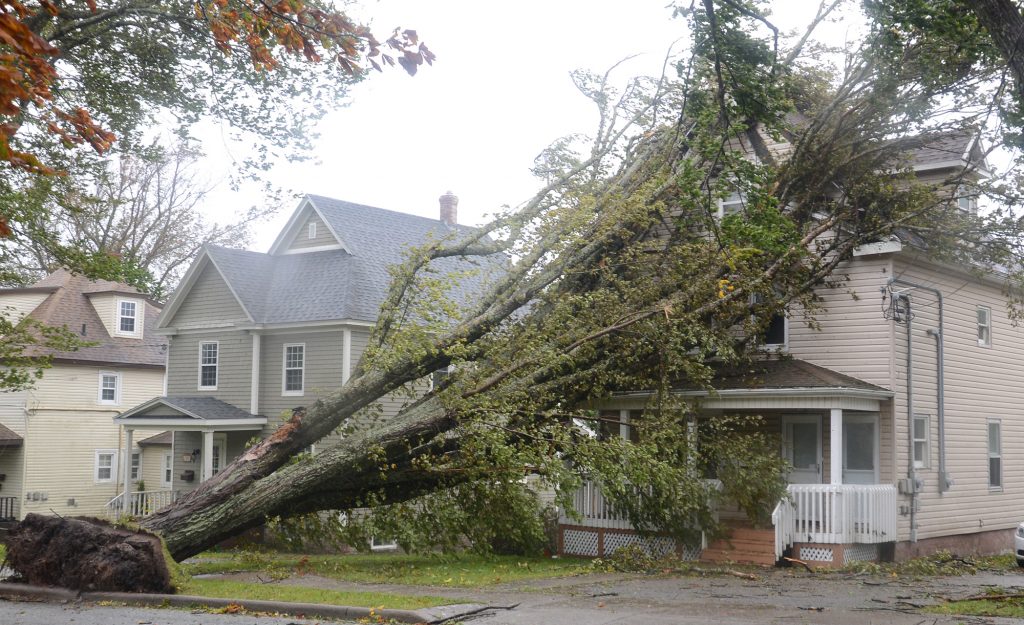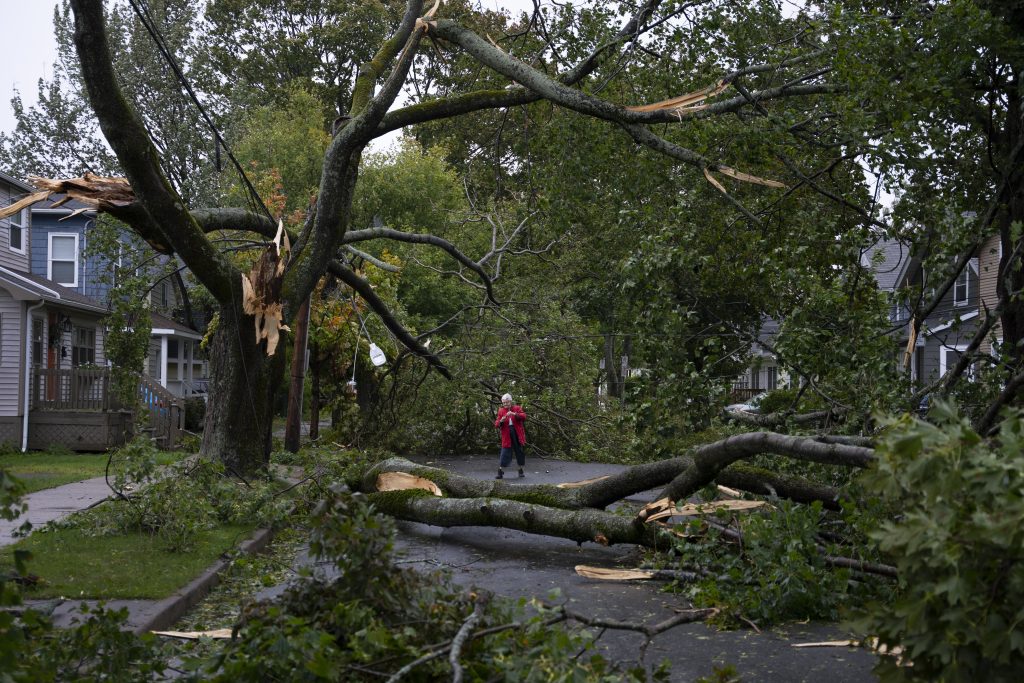States of emergency declared as homes washed away by Fiona

Posted September 24, 2022 6:02 am.
Last Updated September 24, 2022 1:30 pm.
Towns in Cape Breton and on Newfoundland’s southern coast declared states of emergency on Saturday as post-tropical storm Fiona – one of the strongest storms to ever strike Eastern Canada – continued to lash the region.
Rene Roy, editor of the weekly newspaper in Port aux Basques, N.L., said he saw evidence that nine homes, including a two-storey apartment building, were washed out to sea by a massive storm surge and wind-driven waves that soared about 25 metres into the air.
“Lower Water Street is devastated with damage,” said Roy. “There are homes gone. There are homes in the street …. The RCMP are actively investigating whether people have been swept away.”
Brian Button, the mayor of Port aux Basques, N.L., said some local homes have been washed away amid high winds and surging water levels. In a Facebook Live video posted on Saturday morning, he pleaded with residents not to roam around and urged those at risk to seek higher ground.
“So anybody that’s being told to leave their homes, you need to leave,” Button said on Saturday. “There are no ifs, ands or buts, you need to leave.” He warned if they didn’t go, they might find themselves cut off.
“A house can be replaced but you can’t be, so you need to go and … we’ve already had houses and things that have been washed away, so we need you to go now,” Button said.
Police in Newfoundland and Labrador say two people were swept out of residences that collapsed into the water.
RCMP Cpl. Jolene Garland says one woman was rescued by local residents in Port aux Basques, N.L., and is believed to be fine after being taken for medical attention.
Police have reports that a second woman in the same town was also swept out into the ocean, and her status is unknown.
Garland says the woman was apparently swept out from the basement, but storm conditions are too dangerous to conduct a search.
— Wreckhouse Press (@WreckhousePress) September 24, 2022
Fiona was churning out hurricane-force winds at about 150 kilometres per hour when it made landfall around 4 a.m. in eastern Nova Scotia, between Canso and Guysborough. The brawny storm has knocked out power to more than 500,000 homes and businesses across the Maritimes.
The Canadian Hurricane Centre in Dartmouth, N.S., said Fiona set an unofficial record for the lowest-ever barometric pressure for a tropical storm making landfall in Canada. The recorded pressure at Hart Island was 931.6 millibars.
The Halifax Stanfield International Airport reported a gust of 109 km/h at 3 a.m., and a gust hit 135 km/h at the mouth of Halifax Harbour. As well, a gust reached 161 km/h over Beaver Island, N.S., which is along the province’s eastern shore.
Many Nova Scotians woke up to rain, wind, down trees and power lines, along with a lot of debris.
In Sydney, N.S., the largest city in Cape Breton, gusts hit 141 km/h at 3 a.m. local time causing severe damage to some homes, forcing families to flee.
The storm has knocked out power to more than 500,000 homes and businesses across the Maritimes.
As of 11 a.m. local time, Nova Scotia Power was reporting 406,000 customers were in the dark – almost 80 per cent of the homes and businesses it serves.

Georgina Scott surveys the damage on her street in Halifax as post tropical storm Fiona continues to batter the Maritimes on Saturday, September 24, 2022. THE CANADIAN PRESS/Darren Calabrese
On P.E.I., Maritime Electric was reporting that 82,000 of its 86,000 customers were without electricity, and NB Power reported 54,000 New Brunswick customers without power, most of them in and around Moncton, Shediac and Sackville.
People in Charlottetown woke up to howling winds, broken branches and downed power lines Saturday morning after a night that saw sheets of rain envelope the city.
“From tonight until possibly Sunday, stay inside unless it is absolutely necessary,” the city said in a statement. “Stay off the roads, and expect continuing power outages.”
At the Charlottetown airport, the wind was gusting at 120 km/h at 10 a.m. local time, and a 150 km/h gust was recorded at the eastern edge of the Island at East Point.
RELATED: A look at how some historic Canadian hurricanes compare with Fiona
Storm surge warnings remain in effect for most of the Gulf of St. Lawrence, southwestern Newfoundland, eastern Nova Scotia and the East Coast of New Brunswick, with waves possibly surpassing 12 metres in eastern portions of the Gulf of St. Lawrence and Cabot Strait.
Coastal flooding remains a threat for parts of Nova Scotia, Prince Edward Island including the Northumberland Strait, the Gulf of St. Lawrence region including Iles-de-la-Madeleine and eastern New Brunswick, southwest Newfoundland, the St. Lawrence Estuary and the Quebec Lower North Shore.
Hurricane and tropical storm warnings remain in effect for most areas.
The hurricane centre said conditions will improve over western Nova Scotia and eastern New Brunswick later in the day, but will persist elsewhere.









